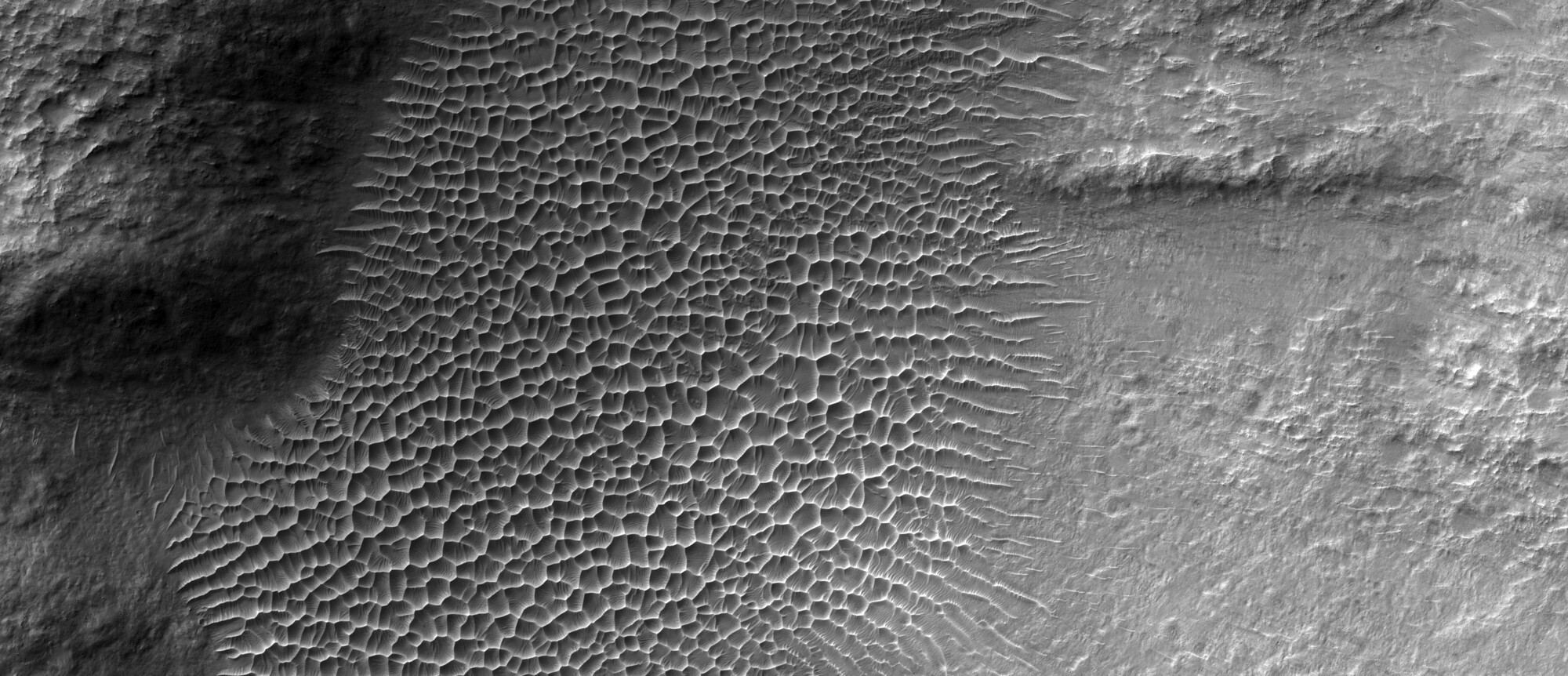Missions to Mars are expensive, even orbiters. They’re there to do science, not take pretty pictures. But sometimes Mars’ beauty is captured inadvertently, usually with some science mixed in.
That’s the case with this picture of star dunes captured by the HiRISE camera on NASA’s Mars Reconnaissance Orbiter.
In most regions on Mars, winds blow in a prevailing direction. It’s the same here on Earth. So most dunes appear as waves, oriented perpendicularly to the wind direction. One common type of dune is Barchan dunes and they have two “horns” that face downwind.

But star dunes are different. They form in winds that shift direction. They’re comparatively rare—on Earth, only about 8.5% of dunes are star dunes.
NASA’s Mars Reconnaissance Orbiter (MRO) has an almost-famous instrument called HiRISE – High-Resolution Imaging Science Experiment. Universe Today is full of HiRISE images. HiRISE wasn’t looking for star dunes when it captured this image in 2010. It was examining a crater in Mars’ Tyrrhena Terra region, looking at the geologic aspects of possible clays detected with the MRO’s CRISM instrument.
The happy accident shows how much geologic diversity Mars has on display.

Star dunes are more common on Mars than they are on Earth because of all the impact craters. The wind swirls around crater rims and comes from many directions before it reaches the sand inside the dune. All that activity shapes the sand into a beautiful pattern.

The image of star dunes in the crater in the Tyrrhena Terra is just a small part of the entire HiRISE image. You can see the whole image here. Check it out.
More:
- HiRISE Flickr: Star Dunes in Tyrrhena Terra
- UofA HiRISE: Star Dunes in a Crater in Tyrrhena Terra
- Universe Today: MRO: Ten Years Of Breathtaking Work Above Mars

